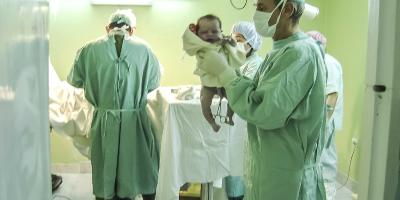Migraine is considered as the most common among neurological diseases. Although it is usually not associated with any serious health or life risks, they cause the suffering of millions of Poles and high costs to the budget due to medical leaves.
Neurologists assess that over 10 percent of the general population suffer from migraine pain, including adults, but also children and adolescents (approximately 324 million people in the world). In the opinion of the Polish Headache Society (PTBG), there are approximately 4 million people suffering from migraine attacks in Poland.
They are usually experienced by women, who account for three-fourths of cases; migraine attacks most frequently happen to people aged between 20 and 40 years.
Nausea, flashes, and scotomas
The migraine pain is pulsating and often starts in one side of the head. With time, it intensifies and may spread to the entire head. Patients consider it as very intensive.
The headaches of most – 70-80 percent – people with migraine attacks are accompanied by nausea, vomiting, oversensitivity to light, sound, scents. These additional symptoms escalate their suffering and force them to isolate themselves from their surroundings and hide in dark, cool, and quiet spaces.
PTBG neurologists assess that in 10-15 percent of the patients the migraines are preceded by several characteristic neurological symptoms which are referred to as the aura (The American Headache Society assesses this percentage at 25-30 percent). These are most frequently vision disorders – scotomas, flashing before the eyes, disorders of the field of vision, and even temporary blindness.
In approximately 1 percent of people with migraines, the aura is similar to a cerebral stroke. Such patients experience feeling disorders in one side of the body, temporary arm or leg stiffness, or speech disorders.
Migraine excludes from life
An untreated migraine attack may last between four hours and over three days, the average duration is one day. The PTBG specialists assess that most patients experience between two and four attacks each month.
However, approximately 8 percent suffer from chronic migraine, in which the symptoms appear at least eight times per month, and the headaches is present for a minimum of 15 days per month.
During migraine attacks, the individuals suffering from it are incapable of normal functioning, are regularly excluded from family, social, and professional life.
The disease is costly not just to the patient, who suffers great expenses for its treatment, but also to employers and the state budget, since it is associated with frequent sick days and reduced effectiveness at work.
In order to minimise these effects, migraine should be diagnosed at an early stage (preferably by a neurologist) and effectively treated.
Lifestyle changes such as regular sleeping habits, regular and proper nourishment, (e.g. avoiding long breaks between meals and dehydration) and keeping away from alcohol can also be favourable.
Causes of migraine
According to the definition provided by Professor Antoni Prusiński, the co-founder of PTBG, in the book entitled “The treatment of migraine and other headaches", migraines are probably genetically conditioned.
The American Headache Society states that people with migraines are more susceptible to other diseases, such as depression, anxiety states, epilepsy, arterial hypertension, cerebral stroke, and irritable bowel syndrome.
This may also suggest that their development is based on a mechanism or a cause-and-effect dependency common for all of the above diseases.









Comments (0)